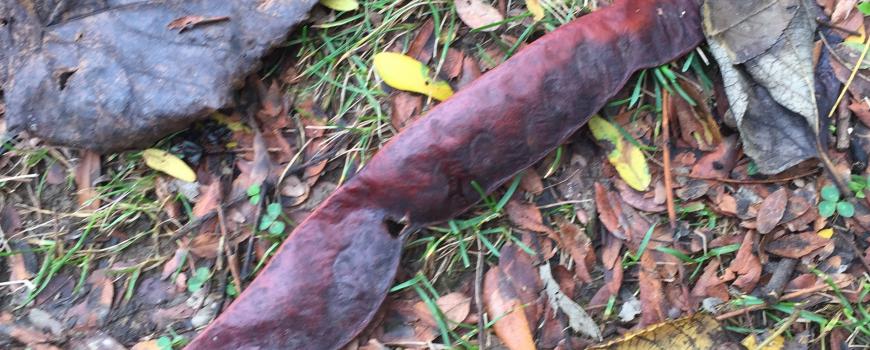October 2017 - Even among all the freshly fallen leaves honey locust (Gleditsia triacanthos) pods stand out on the ground in this young woods. They look like giant, flat pea pods and, unlike the fruit of other native species, nothing eats them. Why would the honey locust tree spend all that energy producing such large fruit if no animal disperses its seeds? The problem may have been answered by an ecologist at the University of Pennsylvania, Dan Janzen, who suggests the honey locust evolved fruit that was eaten by now-extinct megafauna like mastodons. That makes the honey locust an ecological anachronism, a species that has lost its evolutionary partners but manages to survive in the modern world.
Trail location:




